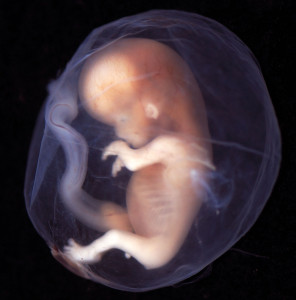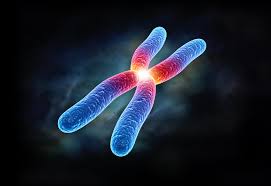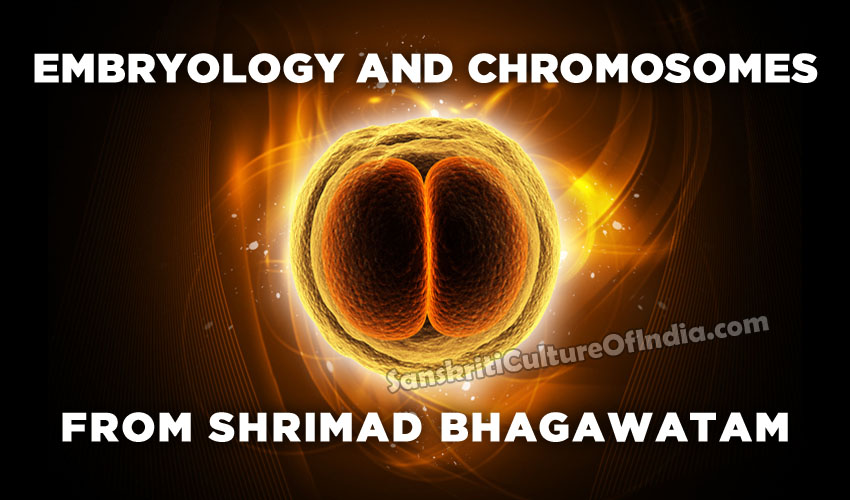Embryology means the study of the human organism in its immature state, from the fertilization of an ovum to the birth of a child. It is usually said that the European countries made purely scientific studies to understand the origin and development of life, while India had no scientific eye at all. Indians thought of only philosophy.
The earliest scientific approach is credited to Aristotle (384 – 322 BC), but it is not a fact. India has done a lot of scientific work, long before Aristotle. Kapil Muni was probably the first man who studied embryo. The epic Mahabharata composed around 5561 BC and the Bhagawata Purana composed around 1652 BC have recorded lot of scientific information about embryology. (I have fixed the dates astronomically)
It is interesting to note that the westerners supposed till recent times that God gifted the babies. On the other hand the ancient Indians had discovered the body secretions, which reproduce and called them Raja (ovum) and Reta (sperm).
The Mahabharata, Shanti, 301, 320, 331, 356, and the Bhagawata 3/31 state that one fine particle (MB 320/117; Bhagwat3/31/1) of Shukra conjugates with that of Shonit during copulation. The fine particles are sperm and ovum. They termed the conjugate product as ‘Kalala’, modern science terms it as ‘Zygote’ or fertilized ovum.
Bhagawata states that only in one night, which means 12 hours’ time, from the coitus, Kalala forms. Science admits that an ovum remains fertilizable for a short time, measured in hours, after its release from ovary. The Mahabharata states that Kalala converts into a Budbuda, and according to the Bhagawata (3/31/2) it happens in five nights. Science accepts that a bubble stage appears in five nights. Budbuda means a bubble. Bhagawata mentions that after ten days Karkandhu is formed. Karkandhu means a fruit Jujube (Bora in Marathi). Science calls it a solid, round mass of cells. Photo of 11th day embryo shows a similar shape. After Karkandhu, ‘Anda’ is formed according to the Bhagawata. Science calls it as oval shaped.
The Bhagawata describes all the microscopic changes taking place up to 15 days of the embryonic life, in a womb of a living woman. It is surprising. Science has used microscopes, uterine wash-outs, post-mortem examinations, etc to come to the same conclusion as the Bhagawata.
At 3/31/3 the Bhagawata states that at the end of one month the embryo develops head. Modern photos of 32 days’ embryo show head clearly. It is seen in the recent photos of 30 days’ embryo. Bhagawata says further that in the second month of pregnancy the upper and lower extremities and other parts of body develop.
 In the third month of pregnancy, Bhagawata says that nails, hairs, bones, and skin develop. This is proved by modern science.
In the third month of pregnancy, Bhagawata says that nails, hairs, bones, and skin develop. This is proved by modern science.
It is shocking to read in the Bhagawata that the Linga i.e. external genitalia are formed in the third month. Science has revealed that external genitalia are present in 8 weeks’ old embryo. According to science male genitalia take their final form at the end of the 3rd month and Utero-vaginal canal also forms by the third month. Anus is formed some time after the genitals.
Bhagawata states that all the seven Dhatus are formed in the 4th month. Dhatus means the various tissues. Seven Dhatus are Rasa (tissue fluids), Rakta (blood), Snayu (muscles), Meda (fatty tissue), Asthi (bones), Majja (nervous tissue) and Shukra (reproductive tissue). Science accepts that all these are ready in the 4th month.
Bhagawata says that in the 5th month Hunger and Thirst develop. Modern science does not know this fact. However, on the basis of the facts found out by modern science I say that Bhagwata is true. See how. The meconium (faecal matter) found distributed in the gut from the Duodenum to the Rectum, contains lanugo hairs and sqamous epithelial cells. The only way they can reach the intestine of the foetus is by swallowing the amniotic fluid, in which the foetus lies and in which these elements are always found to be present in suspension. Both the lanugo hairs and epithelial cells fall from the skin of the foetus in the amniotic fluid. The foetus drinks this fluid. The uniform distribution of the meconium throughout the gut indicates that peristalsis is present in the foetal intestines showing, in turn, functioning of the gastrointestinal tract. Due to peristalsis i.e. the movements of the intestines the meconium spreads evenly all over the intestines. As the intestines are functioning in the 5th month, it is certain that the foetus drinks amniotic fluid, when it feels. It proves that the foetus must be experiencing hunger and thirst as said in the Bhagawata.
Bhagawata says that in the 6th month, the foetus goes on rotating in the womb, being surrounded by many coverings. It is a fact proved by science.
In the 7th month the Jeeva remembers everything about its past lives and also gets knowledge about the present life. Science cannot demonstrate this fact, but it can be inferred indirectly. The foetus of 7th month is viable, so its brain must be functioning in the 7th month. Electro-encephalographic tracings of the foetus may give answer to this problem, in future. As all other statements of the Bhagawata are seen to be scientifically true, this statement may also prove correct in future.
The Bhagawata states that the foetus grows by the nourishment taken by its mother. It is a proved fact. It further says that the foetus lies in the dirt made by urine and faeces. This statement is wrongly interpreted by all scholars, who say that the foetus lies in the urine and faeces of the mother. It is not so; but it is a fact that the foetus lies in the urine and faeces of its own, which are excreted in the amniotic fluid, inside the uterus.
In the 8th stanza, Kapil Muni describes that the foetus lies with complete flexion of its back and head. It is a true fact, scientifically proved. 9th stanza says that the foetus is unable to do respiration. This is also true, because the foetus lies in the amniotic fluid and requires no breathing. The foetus gets oxygen and nourishment from the mother’s blood.
From stanza 22nd onwards, Kapil Muni says that in the 10th month the foetus is forced down by Prasooti Vayu, through the maternal passage. During this process of delivery, the foetus gets lot of troubles and loses its past memory. Science cannot give any proof for the loss of memory, but we can assess it by the fact that during delivery foetal head is compressed to a great extent. It may compress the brain, which in turn, may cause loss of memory. It is a proved fact that compression and concussion of brain of adults, causes loss of memory.
More details of development of embryo are given by the Bhagawata (2/10/17-22, 3/6/12-15 and 3/26/54-60). There the Bhagawata tells that first of all the mouth is formed, then two nostrils, then eyes and finally ears are formed. 2/10/17-19 states that palate, tongue and larynx develop after the formation of mouth. These details appear correct in the light of modern science. Gray’s anatomy states that the formation of the head fold is followed by formation of the Stomodium and the primitive mouth. During the 5th week of pregnancy, Olfactory placodes form and soon they depress to develop the Olfactory pits. These pits convert into nasal cavities with the lateral and maxillary processes. Then nares are completely defined. (Head end of embryo in 6th week). While these changes are in progress the primitive palate is constituted. Side by side tongue forms with its musculature as also the Laryngo-tracheal tube, which develops into the Larynx and the respiratory organs. Thus the modern Embryology supports the view of the Bhagawata that the palate, tongue and larynx develop simultaneously with the nostrils after formation of mouth.
The Bhagawata gives the order of development that first mouth, then nostrils, then eyes and then ears develop. This order is admitted by modern embryology.
The Bhagawata mentions (2/10, 3/6, 3/26) that the heart develops after the extremities and the anus. It means that the heart develops in the 2nd & 3rd month of pregnancy. It is proved to be true during 1972, when Dr. H.P.Robinson, Glasgow University, showed using ultrasonic Doppler technique, that the heart begins at about 12-14 weeks. The foetal heart movements can be recorded as early as 7th week. Thus the discovery of 1972 appears recorded in the Bhagawata composed during 1652 BC. It means 1652 + 1972 = 3624 years earlier than modern science.
The Bhagawata states at 2/10/26 that in embryo the penis develops prior to the anus. Modern Embryology agrees with this finding.
The Bhagawata states that two ears develop to get knowledge of sound and directions. Two separate functions are attributed to the ears, clearly. It is proved true during 1936 when Ross and Tait published their paper showing that the directions are recognized by the Labyrinth, situated in the Internal ears. It is surprising that the Aitereya Upanishad (1/1/4 and 1/2/4) mentions the same fact. The Aitereya Upanishad is composed around 6000-7000 BC, according to me.
The Bhagawata attributes two functions each to the five sense organs. Nostrils smell and take in air. Eyes see and keep Teja. Teja means the lustre or shine of energy. Modern science accepts only one function of the eye, which is the vision. However we have to admit the second function of the eyes that they store energy. We can observe that an energetic person has shining eyes. Intelligent person also shows lustre in his eyes. An ill person loses shining of his eyes. Reta represents Energy. It is a fact that after loss of Reta, the eyes lose their lustre. The Upanishads say that Reta extracts energy from the whole body. It appears true in personal experience.
The Bhagawata gives marvellous microscopic details about the origin of a person (Purusha). It is narrated in a form of a story of He and She. (3/6/1-5)
He noticed that unless He and She unite, reproduction is not possible. Therefore He conjugated with She. He entered into her 23 principles and brought together all the 23 principles. He stimulated her creative energy. Her 23 principles got activated, they conjugated with his 23 principles and the combined energy of those 23 principles reproduced the person.
This description resembles closely with the modern observations. The 23 principles are the 23 Chromosomes. It is amusing to see that the Mahabharata mentions 24 principles named as Gunawidhi and the Bhagawata tells 23. Modern science also went through the same confusion. Up to 1962 all the textbooks mentioned 24 chromosomes, but thereafter 23 are mentioned. The scientist who counted 24 chromosomes got the Nobel Prize. At the same time another scientist declared that chromosomes are 23. He did not get the prize. However, later on it was confirmed that chromosomes are 23. The same might have happened between the scientists of the Mahabaharata and the Bhagawata.
The Mahabharata mentions 24 Gunawidhi, including the Prakruti or Pinda or the genetic cell. Gunawidhi is a descriptive and scientific name. Guna means characters, which depend on the chromosomes. Widhi means the functions, which also depend on the chromosomes. The genetic cell plays an important role in reproduction. A genetic cell of a cow produces a cow and not a horse. Therefore, Vyasa might have considered the Prakruti or Pinda as Gunawidhi.
Modern science has shown that the 23 chromosomes of a sperm join with those of an ovum and then an embryo forms. This fact was discovered by ancient India at least 7500 years ago, since the Mahabharata.
The Bhagawata goes ahead to describe even the cell division, thus: 3/6/7 states that the embryo divided itself once, ten times and three times. It is the first descent of the fraction of Paramatma.
 By one division one cell divided to form two cells. This happened ten times, so that xxxx number of cells formed. It happened three times so that xxxx cells formed. It is surprising to note that modern science has found out that so many cells do form a newly born baby. Three times is separately told, because multiplication happens at three levels, namely ectoderm, endoderm and mesoderm, according to modern science.
By one division one cell divided to form two cells. This happened ten times, so that xxxx number of cells formed. It happened three times so that xxxx cells formed. It is surprising to note that modern science has found out that so many cells do form a newly born baby. Three times is separately told, because multiplication happens at three levels, namely ectoderm, endoderm and mesoderm, according to modern science.
It shows that the sages had knowledge up to the level of modern science. Not only that they were far advanced than modern science. Modern science has not understood why a normal couple does not reproduce. Sages say that Jeevatma is not perishable. At the time of death, it leaves the physical body and goes to Bhuvarloka. Then it comes down with rainwater, enters a food grain, goes in to a male and occupies a sperm. With that sperm it enters the female and joins with an ovum to create an offspring. The sperm on which rides Atman gets success to win an ovum. During one coitus 200 to 300 millions of sperms are deposited in a female passage. Out of them only one enters an ovum. Why that one only? Science says it is a chance. This is not a scientific reply. Sages have scientific reply. They say that the embryo is the first descent of a fraction of Atman. That part of Atman is named as Prana. Prana enters in and guides the sperm to enter an ovum.
Why does a normal couple remain issueless? Science has no reply. Sages tell that no Prana comes to ride over a sperm, to reproduce.
This theory explains who is responsible to deliver a child. Science has two views. One view says that the mother is responsible, while other says the baby is responsible. If mother decides time of delivery, why every time the gestation periods change? If the child decides delivery, then the question comes that after 7 months the baby is viable, then what does it do in womb for two months more? Sages give a perfect reply. When Prana enters the child in womb, it comes out of water. This water is the amniotic fluid. Child comes out of it, when Prana enters it. Thus the delivery depends on Prana, and not on either mother or baby. Prana is subtle. It enters a sperm, meets an ovum, and by inducing Jeeva or life, begins work of building a living body. Then it goes away, only to re-enter at the time of delivery.
The Bhagawata says (3/26/63-70) that all the organs of a living body are ready, their Dewatas (which means energy) have begun work, even then the baby does not come out of water. Finally, Kshetrajna Atman stepped in Chitta and aroused it from water. It means that the baby comes out of amniotic fluid, when Kshetrajna Prana enters it.
Thus the Bhagawata of 3600 years ago and still more ancient scriptures, like the Mahabharata and the Upanishads, show profound scientific knowledge, which can be used today. Our scientists should work laboriously on this treasure of knowledge.
Modern science will get benefits from ancient science.
~ Dr. Padmakar Vishnu Vartak











